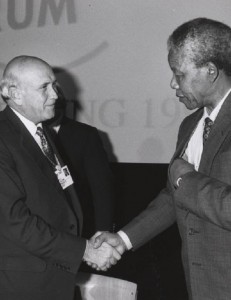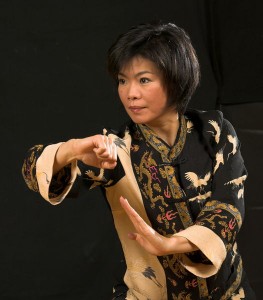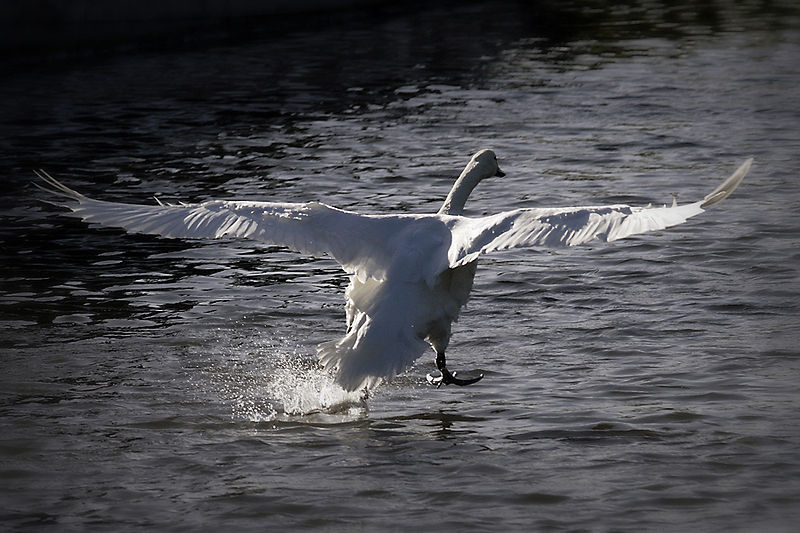There’s been a lot of information in the media reporting the positive results of research into the health benefits of meditation in recent years. However, this new Huffington Post article gives an especially useful summary of them in an informative diagram (scroll down below the article).
Monthly Archives: December 2013
Poetry 6
The Wild Swans at Coole
The trees are in their autumn beauty,
The woodland paths are dry,
Under the October twilight the water
Mirrors a still sky;
Upon the brimming water among the stones
Are nine and fifty swans.
The nineteenth Autumn has come upon me
Since I first made my count;
I saw, before I had well finished,
All suddenly mount
And scatter wheeling in great broken rings
Upon their clamorous wings.
I have looked upon those brilliant creatures,
And now my heart is sore.
All’s changed since I, hearing at twilight,
The first time on this shore,
The bell-beat of their wings above my head,
Trod with a lighter tread.
Unwearied still, lover by lover,
They paddle in the cold,
Companionable streams or climb the air;
Their hearts have not grown old;
Passion or conquest, wander where they will,
Attend upon them still.
But now they drift on the still water
Mysterious, beautiful;
Among what rushes will they build,
By what lake’s edge or pool
Delight men’s eyes, when I awake some day
To find they have flown away?
W.B. Yeats (1865–1939)
If there is a poem that you would like to suggest for this section, send it to me at barry@middlewaysociety.org and say in what way you feel it is meaningful to you.
Image courtesy of Wikipedia commons
The great conciliator
The warm words from around the world following the death of Nelson Mandela seem to me to offer some powerful messages about effective integration.  I must admit to sharing a lot of the general admiration, and it was no accident that I put this picture of him shaking hands with F.W. De Klerk on the cover of my book ‘Middle Way Philosophy 2: The Integration of Desire’. What is so striking about Mandela is the way that his personal integration in prison was so decisive in the political integration of his country. In the complexity of politics, there are few such clear examples of the link between the two levels of integration, the microcosm and the macrocosm (Aung San Suu Kyi is perhaps another, but her mission to bring Burma to democracy still has a long way to go).
I must admit to sharing a lot of the general admiration, and it was no accident that I put this picture of him shaking hands with F.W. De Klerk on the cover of my book ‘Middle Way Philosophy 2: The Integration of Desire’. What is so striking about Mandela is the way that his personal integration in prison was so decisive in the political integration of his country. In the complexity of politics, there are few such clear examples of the link between the two levels of integration, the microcosm and the macrocosm (Aung San Suu Kyi is perhaps another, but her mission to bring Burma to democracy still has a long way to go).
One needs to give priority to the big picture to admire Mandela in this way. One needs to compare what actually happened in South Africa with the bloodbath that might have happened, and emphasise his obvious importance in making the difference. Part of the basis for admiration also includes Mandela’s awareness of his own limitations, indicated in his decision to step down after one term as president, together with the stories of his personal kindness, including to people whom he had every reason to hate, such as Betsy Verwoerd, the widow of a previous hardline Apartheid Prime Minister.
However, if you look in more detail at some of the many obituaries that are featuring in the media today, Mandela’s many weaknesses also become clear. His two divorces, his apparent naivete in dealing with the wealthy and enjoying wealth himself, his apparent climbdown from former left-wing ideals when in office, and his lack of attention to the details of government, are all mentioned. Despite the fact that his conversion to violence was evidently reluctant, he could also at one time be labelled a terrorist (and indeed was). If you simply project a heroic archetype onto Mandela and expect him to fulfil every detail of that archetype, you will be disappointed.
What seems more important is to separate our projection of the hero from the complexity of the man, and appreciate both for what they were. The man was flawed, but, if you look at the big picture, still a real example of how integration can actually happen, both in personal and political terms, even if it seems against the odds. As an archetype we can put his image alongside that of other flawed human beings – Gandhi, Jesus, and the Buddha, for instance, as able to more generally reflect a way forward for us. I would not put his image on a shrine and burn a candle before it, because that to me seems to create too much confusion of the archetype and the person. Nevertheless, if we can maintain that awareness of the difference, and of the real complexity of the issues that the hero works with, there is no need to set any limits to our depth of admiration for the archetype. We can admire the hero, yes, but we can particularly admire the flawed hero who engages with the full difficulty of the conditions around him.
New proposals for a practice framework in MWS
I have written the paper linked here ( The Threefold Model of Practice) to give some detailed reflections and proposals for practice classes in the Middle Way Society. It includes the following:
- Some reflections from my experience of practising for around 20 years in the Triratna Buddhist Community (then FWBO), an assessment of the strengths and weaknesses of Triratna practice, and what we might learn from them
- A reflection that most people probably need to engage with the Middle Way through practical experience rather than only through theory

- A proposal for a threefold model of practice in MWS, meaning that we aim to work in parallel at the integration of desire, meaning and belief: for example, using meditation alongside the arts and critical thinking
- Proposals for how we might get MWS practice classes going in different places, to help a wider range of people
I seek feedback on these proposals from anyone interested, whether or not you are a member of the society and whether or not you envisage ever being involved in practice classes. It is not final and may be improved upon.
Picture: Tai Chi pose (Wikimedia Commons)
The MWS Podcast: Episode 6, Iain McGilchrist
In this episode, the patron of the society Iain McGilchrist, talks about his book The Master and his Emissary, the value of the arts, his views on, awe, modernity and religion and how he feels his work relates to the Middle Way.

